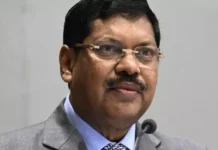
Forex Fluctuation: India’s Reserves Remain Strong Amid Global Market Dynamics
NEW DELHI – In a week marked by ongoing global economic currents, India’s foreign exchange reserves saw a slight dip, declining by a marginal $396 million to stand at $702.57 billion for the week ending September 19, according to the latest data from the Reserve Bank of India (RBI). This minor fluctuation, however, is a testament to the RBI’s proactive strategy of managing rupee volatility rather than a sign of a weakening financial position.
The Indian central bank’s latest statistical release shows that the overall forex kitty, while seeing a reduction, remains firmly in a position of strength, a key indicator of the country’s economic resilience. This minor dip follows a robust surge of nearly $4.7 billion in the previous week, a pattern of ebb and flow that is common in global currency markets. The data comes at a time when India is increasingly being recognized as a major player in the global economy, with its financial policies under close scrutiny.
The primary driver of this week’s decline was a fall in Foreign Currency Assets (FCAs), the largest component of the reserves, which decreased by $864 million to $586.15 billion. FCAs are held in a variety of non-US currencies, and their dollar value can be affected by the appreciation or depreciation of these currencies, such as the euro or the pound, against the US dollar. This means that a portion of the decline is simply a matter of valuation changes.
While the FCAs fell, there were positive movements in other components. The country’s gold reserves saw a significant increase of $360 million, reaching $92.78 billion. Similarly, Special Drawing Rights (SDRs) and India’s reserve position with the IMF also showed modest gains. This balanced movement across different assets highlights the diversified and well-managed nature of India’s foreign exchange holdings.
RBI’s Role in Maintaining Stability
Financial experts and market analysts point out that such fluctuations are a normal part of the RBI’s intervention strategy. The central bank regularly steps in to buy or sell US dollars to prevent excessive volatility in the Indian rupee. In July, for instance, the RBI did not purchase any US dollars for the first time in over a decade, choosing to sell a net of $2.54 billion to stabilize the rupee amid pressures from global geopolitical tensions and trade factors. These strategic moves are aimed at ensuring orderly market conditions rather than targeting a specific exchange rate. The robust level of reserves gives the RBI ample ammunition to defend the rupee when needed, providing confidence to foreign investors and rating agencies.
This recent data underscores the importance of a strong forex reserve position, which acts as a crucial buffer against external shocks and a key factor in attracting foreign direct investment (FDI). India’s reserves have been on a significant upward trajectory, hitting a record high of $704.885 billion in late September 2024. This growth story is a key reason why India is currently trending as a preferred destination for global capital.
The central government and financial institutions, including the RBI, are committed to strengthening the economy and fostering a stable financial environment. This includes measures to promote digital inclusivity and expand network connectivity, such as the launch of the indigenous BSNL 4G stack, as highlighted in a recent report by The TLC News. For more on India’s economic journey, visit thetlcnews.com/india-news/.
A Strong Foundation for a ‘Viksit Bharat’
The latest forex data, while showing a minor decline, reinforces a larger narrative of a nation building a robust, self-reliant financial system. The continuous accumulation of reserves over the years has placed India in an elite league of nations, and its well-managed approach to currency volatility is a key reason for its ranking among the world’s most promising emerging economies. The reserves provide a strong foundation for India’s long-term vision of becoming a ‘Viksit Bharat’ (Developed India) by 2047. To stay updated on the latest technological and economic developments shaping this vision, explore the latest trends in technology at thetlcnews.com/technology/.




